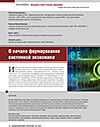An improved model for calculating microeconomic criteria for the effectiveness of investments in energy projects
DOI: 10.33917/mic-3.116.2024.41-68
An improved methodology for calculating microeconomic criteria for the effectiveness of investments in energy projects (and other real sector projects) based on the UNIDO methodology is presented. It allows to determine the analytical relationship between the engineering and economic parameters of power plants (throughout their life cycle) and a set of microeconomic criteria for the effectiveness of investments. Strictly mathematically, the secondary criteria are derived from the definition of the main microeconomic criterion – net present value (NPV): the internal rate of return IRR, the levelized cost of electricity (LCOE) and the discounted payback period DPP. Numerous examples and graphic illustrations of estimates of individual parameters of investment projects and criteria for investment efficiency are given. A significant difference between the proposed methodology for calculating investment efficiency criteria is the use of average annual values of revenue, operating costs and production, as well as the introduction of special coefficients (φ) reflecting the effect of discounting cash flows at each period of the life cycle (construction, operation and decommissioning).
References:
1. Management of Nuclear Power Plant Projects. IAEA Nuclear Energy Series No. NG-T-1.6. Vienna, 2020. 160 p.
2. Kharitonov V.V., Kosterin N.N. Criteria of investment payback in nuclear power engineering // Izvestiya vuzov. Yadernaya Energetika. 2017;2:157-168. (In Russ.).
3. Meso-economics of development / edited by Corresponding Member of the Russian Academy of Sciences G.B. Kleiner. CEMI RAS. Moscow: Nauka, 2011. 805 p. (In Russ.).
4. Chernyakhovskaya Yu.V. Macroeffects of international NPP projects. Studies on Russian Economic Development. 2018;1(166):29-37. (In Russ.).
5. Chernyakhovskaya Yu.V. Integrated NPP sales: how does it work? Economic and organizational aspects. Problems of Atomic Science and Engineering. Series: Physics of Nuclear Reactors. 2016;3:147-148. (In Russ.).
6. Kharitonov V.V, Kosolapova N.V., Ulyanin Yu.A. Forecasting of the investment efficiency in the multi-unit power plants. Vestnik of NRNU MEPhI. 2018;7(6):545-562. (In Russ.).
7. Akinfeeva E.V., Semenova D.Yu., Kharitonov V.V. Forecasting of investment efficiency in the digitalization of nuclear power. Studies on Russian Economic Development. 2021;6:648-653. (In Russ.).
8. Klauz A.V., Frolov I.E., Kharitonov V.V., Shaeva A.A. Calculation methodology of the criteria of the economic efficiency of the investments into the nuclear icebreakers. Izvestiya vuzov. Yadernaya Energetika. 2021;3:107-120. (In Russ.).
9. Listopadov I.Yu., Kharitonov V.V. Estimation of Investment Efficiency in Nuclear Desalination of Sea Water. Atomic Energy. 2021;130(3):174-179. (In Russ.).
10. Economic Evaluation of Bids for Nuclear Power Plants. 1999 Edition. Technical Reports Series No. 396, IAEA, Vienna, 2000. 224 p.
11. INPRO Methodology for Sustainability Assessment of Nuclear Energy Systems: Economics. INPRO Manual. IAEA Nuclear Energy Series No. NG-T-4.4. IAEA, Vienna, 2014. 92 p.





